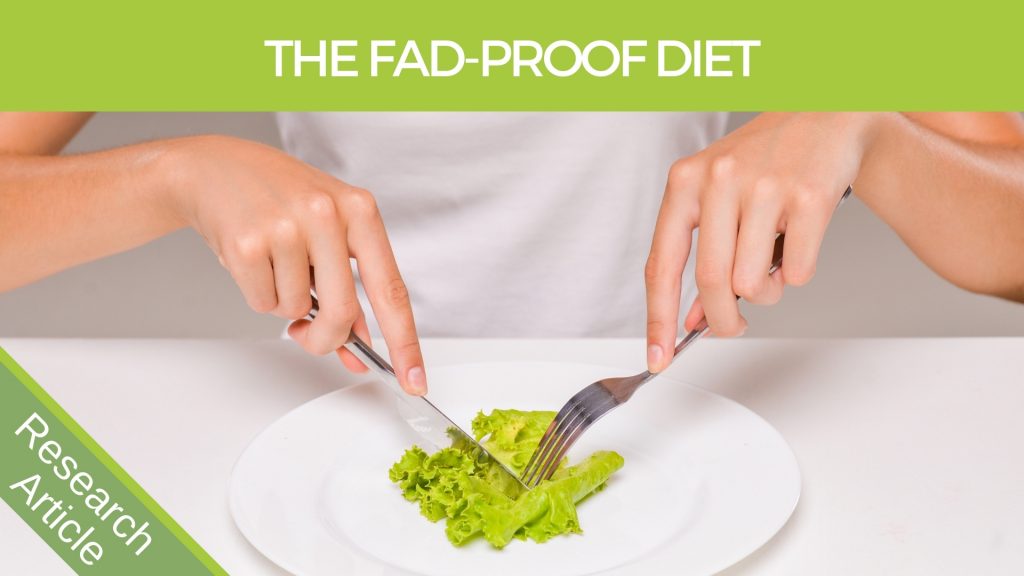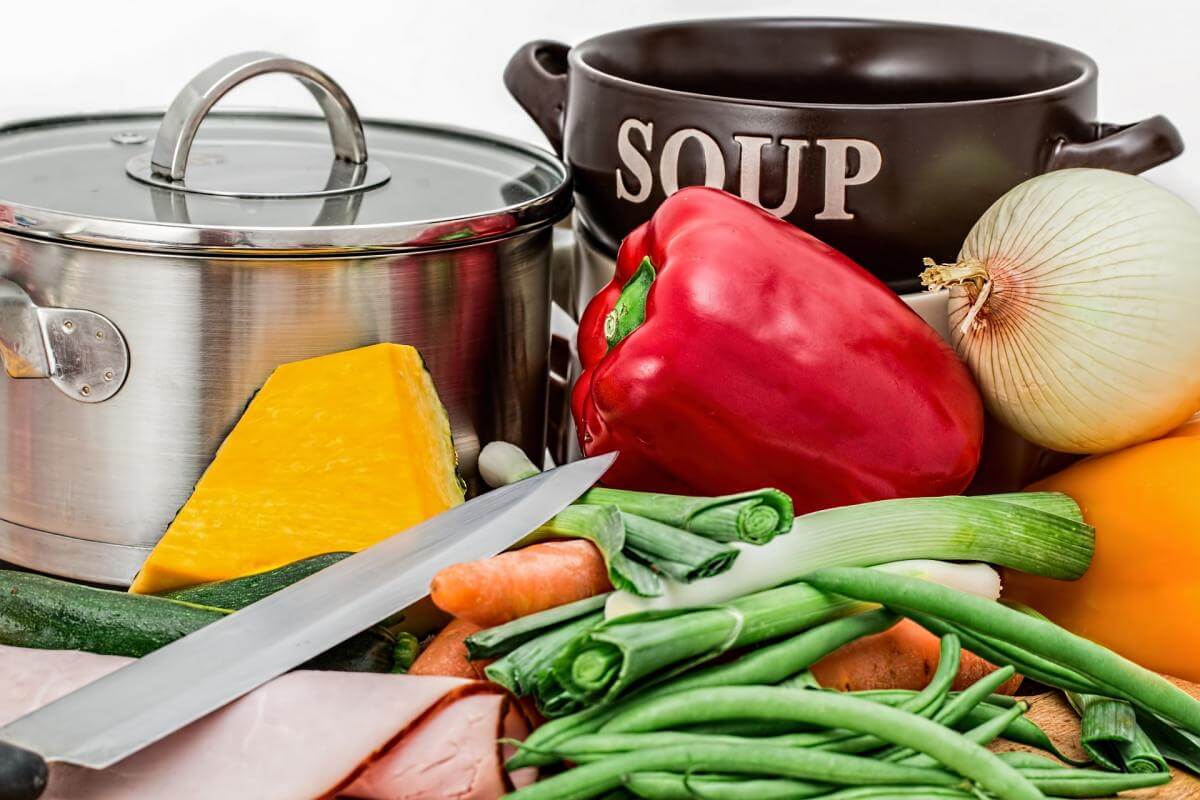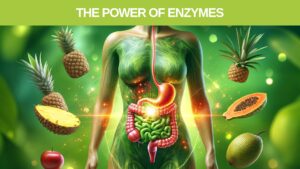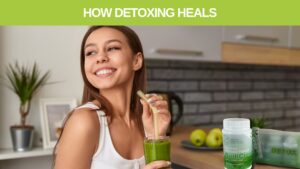- 1 year ago
- 9Minutes
- 1759Words
- 150Views
You have probably heard of these popular diets:
- Calorie counting;
- The Paleo Diet;
- The Atkins Diet;
- The Keto Diet; or
- The Raw food diet.
Other older fad diets include:
- The Zone Diet;
- The Blood Type Diet;
- Food combining;
- The Mediterranean Diet; and
- The Macrobiotic Diet.
And this is not an exhaustive list, there are many more such fad diets!
What I will share with you today is what I’ve called the ‘Fad-Proof’ eating plan.
The Golden Rule of being Fad-Proof
Statistics show that 50-80% of people who embark on a diet inadvertently fail. That’s because most of them are fads. (1,2)
A fad is something that comes along quickly, everybody goes crazy about and is short lived. That means it’s simply not sustainable and is not the sort of thing we should be looking at for our health. If we follow the latest fad just to be trendy or fashionable, then more than likely we will be doing ourselves more harm than good. If we want lasting results, it’s really got to be about our inner health, peace, and healing and fads don’t offer that.
To be fad proof we need to follow things that have been around for a very long time and have stood the test of time.
The Most Common Diet Mistakes
The biggest mistake we can make is to go on a diet thinking that cutting back on food is going to make us healthier, especially if we’re just counting calories. The Jenny Craig Diet plan focuses entirely on this, and with this plan supplying the food as well, we are not really being taught anything about healthy eating.
The second big mistake is to cut back on specific food groups, like fat or carbohydrates, as this just leaves us feeling tired, hungry and deprived. We simply can’t last on a restricted diet like this.
The other common mistake we can make is to worry entirely about weight loss when ultimately health is more about being properly nourished and having a strong clean body internally. Weight should not be your primary focus, but rather a positive side effect of healthy eating.
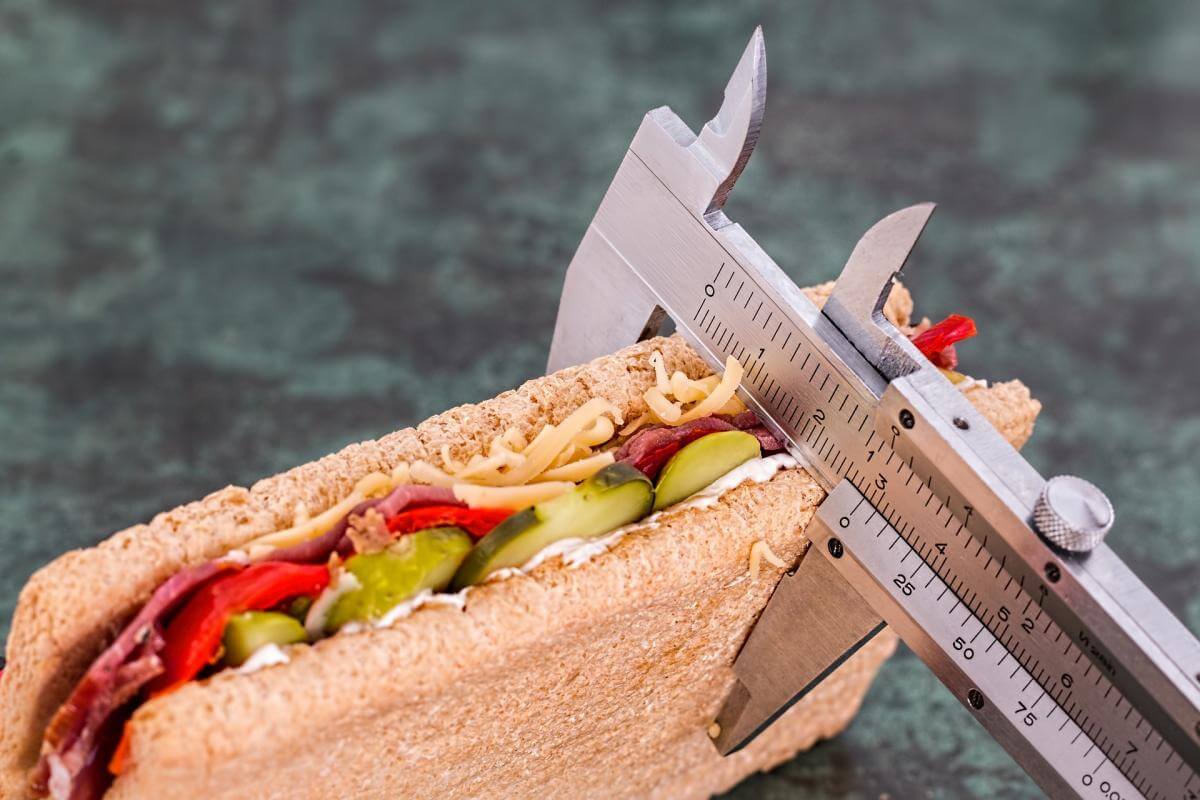
What is a Non-Diet
A non-diet is really a plan that allows you to eat freely and makes you feel like you are not restricted. It encourages you to enjoy both the processes of preparing and eating food.
This way you don’t even know you are on a diet and allows you to continue with the plan long-term.
Now that’s sustainable and healthy.
The Fad-Proof Eating Plan
To be fad-proof you simply need to follow a sustainable eating plan, that’s not a fad diet, and includes food for every occasion.
It’s always good to choose healthy food and yet it needs to be kept simple.
What I will do below is provide a simple list of bullet points that make up a fad-proof sustainable non-diet approach to eating.
Our Ultimate Herbal Detox, Ultimate Herbal Slim and BodiTune Programs also include this eating approach and help consolidate the changes you make.
You may not get this 100% right off the mark, so it’s always good to bite this off in increments.
The Golden Rules
- Always choose unprocessed foods over processed foods;
- Eat more plant-based foods than animal-based foods;
- Eat a wide variety of foods, especially fruits and vegetables;
- Be generous with using herbs and spices;
- Don’t worry about quantity, but focus on quality; and
- Try to be good 80% of the time and allow yourself a weekly cheat day.
In a nutshell, this is what you would call sustainable and healthy.
There are major benefits to being aware of other things like going vegetarian, having more alkaline foods and eating organic, but to keep it simple, try starting with a Herbal Detox, then moving onto the BodiTune or Herbal Slim program to start the ball rolling. The herbal programs really inspire the initial changes and any further changes to be followed through.
Food choices
Below is a short list of foods that fall into the major food groups.Carbohydrates
Carbohydrates are a great source of energy (provided they are still in their natural state – not refined or over processed) and are packed full of vitamins and minerals. Avoid processed carbs like refined grains, pasta, and wheat products especially.
Carbohydrates should include a variety of fruits, vegetables, and whole grains.
Try fresh fruit – kiwifruit, oranges, apples, berries, banana with yogurt or fruit smoothies for breakfast, a salad of lettuce and greens, carrot, tomatoes, celery, beetroot, and a stir fry of bok choy, broccoli, red capsicum, mushrooms, bean sprouts, and courgettes. Try to include a rainbow of colored fruits and vegetables every day. Whole grains are grains such as wheat, barley, quinoa, rice, rye, and oats with the outer bran and germ still intact which means they are higher in nutrients, fiber and taste. Good whole grains to eat are brown rice, rolled oats porridge, quinoa which can be sprouted or cooked.Protein
Protein is necessary for building body tissues such as hair, skin, nails, and bones as well as repairing damaged tissue, hormone production and immunity.
The protein requirements for an adult are between 40-60 grams per day depending on your size. To get an idea of how much 40 grams is there are approximately 10 grams in each of the following: 1½ eggs, 100 grams of tofu, 1/3 cup of nuts, 30 grams of cheese, ¾ cup of lentils, 2 avocados, and 1 ¼ cups of yogurt or milk.
Protein is a sustainable form of energy as well which means that you will feel fuller for longer. Remember that vegetables contain protein too. There are 5g of protein in 1 cup of cooked spinach or 1 cup cooked rice.
Consider vegetable protein options where possible, such as legumes, corn, tofu, and nut milk. If you are going to eat meats, try and eat only white meat, lean chicken and fish if possible.
The need to eat ‘complete’ protein is a myth as protein is broken down into its individual amino acids which are utilized by the body as required.Fats
Dietary fats are necessary for vitamin absorption and hormone production as well as body cell structure. They reduce inflammation and help maintain a healthy body weight.
The best oils to cook with are mono-unsaturated oils such as cold pressed olive oils, avocado oils, and saturated fats such as butter and coconut oil. Saturated fats are only bad for you when damaged by excess heat or hydrogenation which turns them into toxic trans fatty acids.Avoid ALL types of margarine – they are highly processed trans fats. Poly-unsaturated oils like flaxseed, corn, and sunflower are very unstable so should be stored in dark glass bottles and in the fridge if possible. They should never be heated so are best used in salad dressings or drizzled over food after it has been cooked.
Essential fatty acids (EFA’s) are types of polyunsaturated oils (Omega 3 and 6) which we must obtain through our foods. Omega 3 EFA’s are found in oily fish, linseeds/flaxseeds, dark leafy greens, walnuts, and pumpkin seeds, whereas Omega 6 oils are found in evening primrose seeds and most vegetable oils. Most people get enough 6 in their diet but less 3 so make an effort to include food sources on a daily basis.Meal ideas
Breakfast- Porridge sprinkled with pumpkin seeds, yogurt and honey (coconut cream is also nice)
- Free range egg omelet with tomato, mushrooms, spinach, and cheese
- Fruit or berry smoothies, green spinach or kale, and lemon smoothies
- Homemade vegetable soup
- Sushi and Miso soup
- Salad – lettuce, carrot, tomato, sprouts, cucumber, avocado, egg, cottage cheese
- Baked kumara stuffed with your favorite fillings – creamed corn, tomato, chili, fresh herbs, onion, spinach, and cheese, or coleslaw
- Pan-fried fish with pumpkin mash, steamed vegetables, and mango salsa
- Vegetables in garlic, onion, lemon juice, coconut milk, and Coriander. Serve with brown rice, quinoa or buckwheat.
- Dahl and root vegetable casserole served with brown rice and steamed greens or salad
- Sweet potato and lentil fritters with green salad
- Nuts – almonds, brazil nuts, and walnuts
- Seeds – pumpkin and sunflower
- Dried fruit, Dates, raisins, and prunes
- Yogurt, fruit, and juice
- Vegetable stick with hummus, salsa or Guacamole Dip
- Pickles – Cucumber, onions, and olives
Food preparation
Eat a combination of both raw and cooked vegetables to get the full spectrum of nutrients. Steaming and quickly stir-frying vegetables are great ways to keep in flavor and nutrients. All grains should be soaked for 8 to 12 hours before they are cooked to remove the phytates which bind up minerals, making them harder to absorb. This includes brown rice, quinoa, millet, oats (porridge) as well as lentils and legumes. Only use unprocessed sea salt in cooking. Also, try kelp and soya sauce/tamari for a salty flavor. Use plenty of spices, herbs, ginger, garlic, turmeric in your cooking for extra flavor, anti-oxidant activity, circulatory, and gut health benefits. Food sources of commonly deficient nutrients:- Calcium (actually not deficient but the body’s ability to utilize it may be reduced) – Fish such as salmon and sardines, tofu, broccoli, collard greens, bok choy, molasses, clams, dried figs, yogurt, almonds, kale, sesame seeds, and cheeses.
- Iron – Liver, prunes, baked beans, molasses, red meat, spinach, eggs, Swiss chard, beet greens, peaches, and whole grains.
- Magnesium – Legumes, wholegrain cereals, nuts, dark green vegetables, cocoa, seeds, mineral water, tahini, coconut, soya beans, bananas, and chamomile.
- Zinc – Fish, whole grains, peas, almonds, pumpkin seeds, chicken, split peas, sprouts, and brewer’s yeast.
- B vitamins – Brewers yeast, whole grains, wheat germ, nuts, seeds, legumes, avocados, fish and broccoli.
- Vitamin C – Kiwifruit, berries, citrus, capsicums, chili, watermelon, cauliflower, broccoli, tomatoes, kale, spinach, and Swiss chard.
The foods that you eat play a massive role in how you feel physically and emotionally.
Remember, choose plant-based whole-foods, that is, foods with nothing added or nothing taken away, for energy and well-being. The closer to the way they grow in nature, the better for your body.
Eat colorful, add lots of herbs and spices and don’t fall for the latest fad.
May you be strong and live long.
Brett Elliott ®
